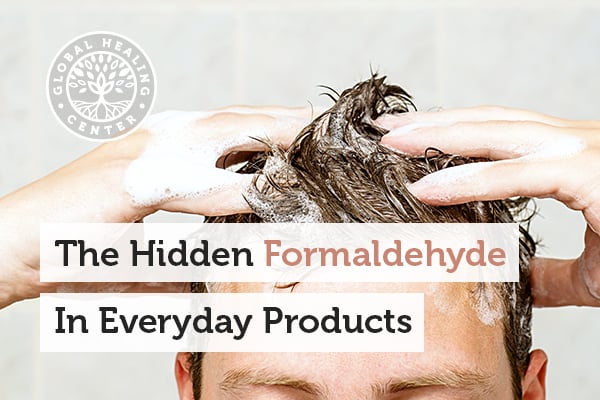
Producers are tricky, and their business sometimes involves tricking consumers. They trick us into buying very handy products for cleaning, deodorizing, softening, smoothing, and beautifying that often contain dangerous chemicals.
If the word "formaldehyde" doesn't remind you of an embalmed body on a cold steel table, it should!
Formaldehyde has been used for decades to embalm dead bodies for open casket burials. It is a preservation fluid that replaces the blood, it is a recognized cancer causing agent (carcinogen) by the National Cancer Institute, and oh, by the way, it is in most of the products you buy and use around your home, even the materials your home was built with!
Is My Home Embalmed?
It might surprise you to know that much of the shelving, furniture, wall finishes, carpet, cabinetry and flooring in your home could contain this dangerous chemical. Formaldehyde can also be found in these building materials:
- Glue
- Plywood
- Fiberboard
- Insulation
- Particleboard
- Timber Paneling
What Other Products May Contain Formaldehyde?
Many personal cleansing and beauty products contain formaldehyde, think about that before you put them on your skin, your largest organ. Here are some of the personal products that might contain this toxin:
- Lotions
- Shampoos
- Sunblock
- Soap Bars
- Cosmetics
- Body Wash
- Toothpaste
- Baby Wipes
- Bubble Bath
Am I Cleaning My Home With Formaldehyde?
The short answer is... probably.

Are you reading every single label? If not, chances are that you are probably using some fairly toxic chemicals in your house cleaning regime. The best rule of thumb is to look for products that say things like "Non-toxic to humans and aquatic life," or "readily biodegradable."
I've read my product labels, and they don't say I'm using formaldehyde containing products.
While it's great you're reading product labels, you must be aware that those tricky manufacturers often use synonyms that don't usually create attention in their consumers. Synonyms and chemicals that "act like" formaldehyde are often used on ingredient lists. Be wary of products containing the following ingredients:
- Formalin
- Methanal
- Oxymethylene
- Urea
- 1,3-Dioxetane
- Quaternium 15
- Methylaldehyde
- Methylene Oxide
- Formic Aldehyde
- Oxomethane Formalin
- Phenol Formaldehyde
The U.S. Department of Health and Human Safety provides a quick reference list of some products known to contain formaldehyde [1]. I'm appalled at the number of baby and kid products on the list, as these little angels usually have no say in whether they're being exposed or not [2].
The Dangers of Using Products Containing Formaldehyde

Watery, burning eyes, nose and throat, asthmatic attacks, skin irritation, headaches and nausea are all possible short term side effects of formaldehyde exposure [3]. Long term effects include cancer and possibly leukemia.
Most products contain only very small amounts of harmful chemicals. The danger lies in our modern habits of using many of these products, and for a long time. As you surround yourself with more and more formaldehyde-containing products your exposure level increases. Similarly, the longer you expose yourself to these products the more exposure you are getting.
Precautions You Can Take to Avoid Formaldehyde Exposure
The first step is getting these chemicals out of your home. Cleaning and personal care products can be easily replaced with natural alternatives (remember to look for products that are "readily biodegradable" and "non toxic to humans and aquatic life").
Other things, like particle board or pressed wood, may take longer to replace, but should be replaced as soon as practical. Or you can use an organic clay paint to absorb any potential out-gassing the next time you paint your walls. In time, you can greatly reduce your exposure to formaldehyde just by knowing what to look for and what to avoid.
And isn't it worth this small change now to avoid the potential long term health impacts on you and those you care about?
References (3)
- U.S. Department of Health & Human Services. Household Products Database U.S. Department of Health & Human Services.
- Lyndsey Layton. Probable carcinogens found in baby toiletries. The Washington Post. 2009 March 13.
- Drugs.com. Formaldehyde Side Effects.
†Results may vary. Information and statements made are for education purposes and are not intended to replace the advice of your doctor. If you have a severe medical condition or health concern, see your physician.







